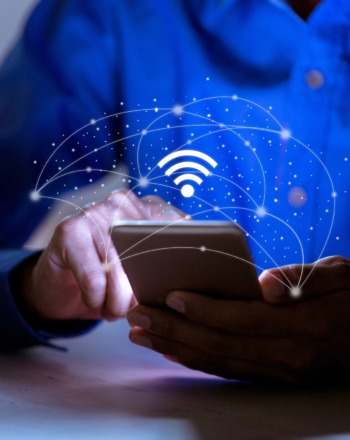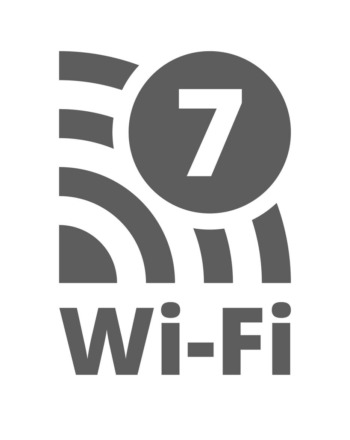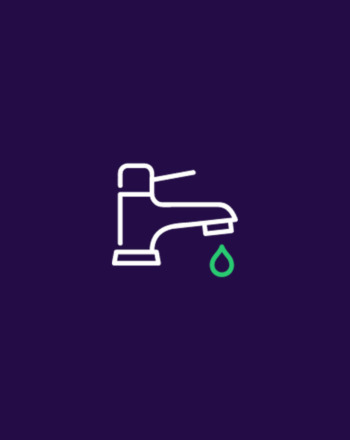If you’ve ever joined a video conference call or called a friend using WiFi, you were using VoIP (Voice over Internet Protocol) technology. Despite this, most people have not heard of the term VoIP, even though its usage continues to dominate everyday communication.
Gaining a grasp on the definition of VoIP and its potential for enhancing business-to-business (B2B) communication can be quite advantageous - read on to find out why, and how companies like Glide are using the technology.
How VOIP works
Every time you have a remote conference call, send a voice note or video call with family or friends, you are using VoIP. Unlike in the past when physical telephone lines dominated the communication industry, VoIP transmits your voice across the internet by converting it into digital data packets. The data packets are interpreted and reassembled on the recipient end, facilitating real-time voice communication over the Internet.
Advantages of VoIP
VoIP holds several significant advantages over communication protocols - let’s take a look at some of the core benefits:
Cost Savings
In the past, communicating over long distances, especially for international calls, often resulted in significant expenses. However, the practice of communicating digitally with friends or business contacts abroad does not raise financial considerations.
This noticeable difference has prompted numerous businesses to switch to VoIP, as it allows voice transmission as data packets over the internet, which is essentially free (provided there is an internet connection available).
Scalability
The expansion of telephone infrastructure, a past necessity driven by the evolving demands of communication, was an undertaking accompanied by a significant financial burden. VoIP on the other hand is designed to be scalable, meaning the technology is adaptable regardless of whether you operate a small business, enterprise, or rapidly growing startup.
Flexibility and Mobility
Today’s digital landscape holds its foundations in convenience, and the last thing modern communication needs is to be limited by physical infrastructure. Thankfully, VoIP is available on any device with an internet connection, and with 5G and rapid fibre broadband more ubiquitous than ever, it’s not often that access to VoIP isn’t available.
Enhanced Features
The fully digital nature of VoIP has given rise to an evergrowing range of augmented communication products. From video conferencing and call forwarding to voicemail to email and crystal-clear transmission, the benefits of VoIP make traditional phone calls feel archaic and antiquated.
Types of VoIP Services
Whilst the technological framework behind VoIP remains consistent across all major channels, it’s important to understand the different types of services and applications that the technology is integrated into.
Residential VoIP
In the past, landline telephones were a ubiquitous household staple. However, the current decade has witnessed their gradual replacement by residential VoIP systems. Residential VoIP allows homeowners to maintain contact with friends and family at a considerably reduced cost, irrespective of geographic proximity.
Business VoIP
VoIP has become a staple of the modern business world; companies are leveraging the technology to facilitate high-definition voice calling with clients and staff, team communications, and automated customer service solutions. Traditional solutions such as phone-operated customer service call centres simply do not meet industry standards anymore, and greatly limit the quality of calls and the business’ ability to scale communications effectively.
Mobile VoIP
Perhaps the most prevalent form of VoIP worldwide is Mobile VoIP. Modern smartphones are pre-equipped with VoIP technology, enabling billions of smartphone users to stay interconnected via all-in-one communication applications. Just about any communication app that you can find on your device will leverage VoIP; it has become the new industry standard for mobile communication.
Unified Communications
Many VoIP applications used on mobile devices today are considered to be unified communication platforms. This means that they not only facilitate voice-to-voice communication but also through video and instant messaging.
VoIP and IoT Integration
VoIP and IoT integration concerns the integration of VoIP into the interconnected world of IoT (Internet of Things). The possibilities of VoIP integrations with IoT devices are endless, and whilst they may sound like science fiction, it’s already a reality and is developing faster every year. Such technology includes:
- Wearable technology (such as smartwatches)
- Electric ‘smart’ vehicles
- WiFi-connected home appliances
- Interconnected entertainment systems
- Home assistants
The Future of VoIP With Glide
It appears that VoIP stands as the future of digital communication, and leading providers like Glide are leading the way in this technological revolution. This is achieved thanks to the reliability, scalability, and cost-efficiency of VoIP, and with VoIP technology developing further every day, Glide is set up for serious innovation in the future.






































































































